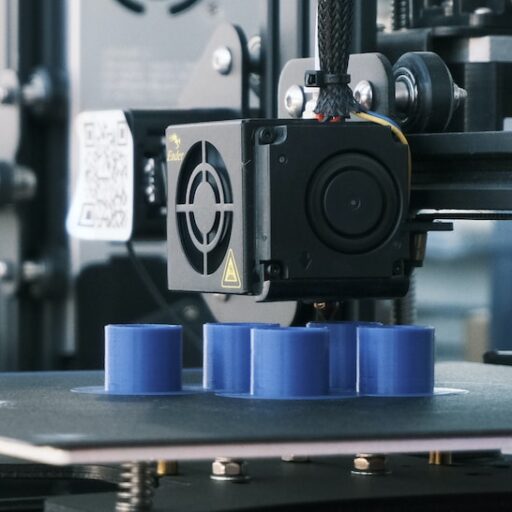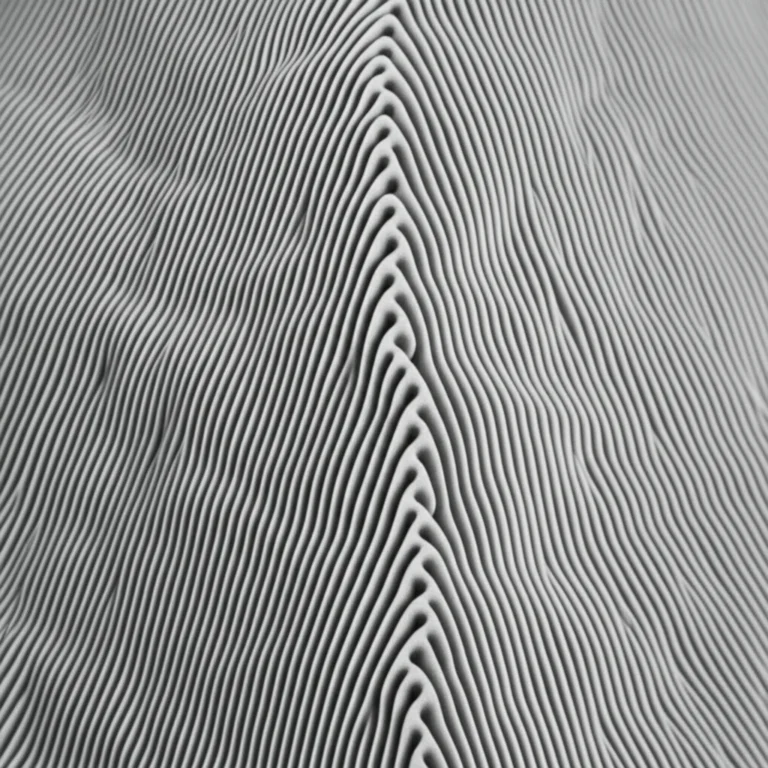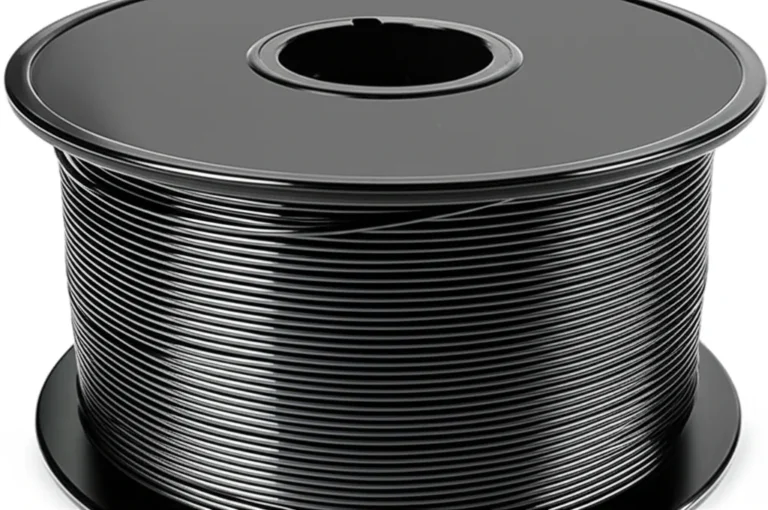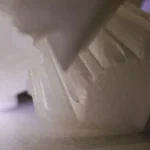Support our educational content for free when you purchase through links on our site. Learn more
Do 3D Prints Degrade Over Time? The Ultimate 2025 Guide 🕰️
Ever wondered if your favorite 3D printed figurine or that custom drone part will stand the test of time—or quietly crumble into plastic dust? Spoiler alert: yes, 3D prints do degrade, but how fast and why depends on a surprising mix of material science, environment, and even your storage habits. We once left a glow-in-the-dark PLA Benchy on a sunny windowsill in Arizona—after two summers, it looked like a relic from a forgotten civilization, brittle and chalky. But that’s just one side of the story.
In this comprehensive guide, we dive deep into the science behind polymer degradation, compare how popular filaments like PLA, ABS, PETG, and resins age, and reveal expert tips to extend your prints’ lifespan. Curious about which filament laughs in the face of UV rays or how to store your spools like a pro? Stick around—we’ve got you covered with real-world tests, insider tricks, and even the lowdown on exotic materials that might just outlive your houseplants.
Key Takeaways
- All 3D prints degrade over time, but the rate varies dramatically by material and environment.
- PLA prints last 10–15 years indoors but degrade rapidly under UV and moisture exposure.
- PETG and ASA are top picks for outdoor durability, resisting UV and water damage better than PLA or ABS.
- Resin prints can last 5–15 years indoors with proper curing and UV protection but are brittle by nature.
- Moisture is the silent killer of filament quality—store spools in vacuum-sealed containers with desiccants.
- Post-processing coatings and smart design choices can multiply your print’s lifespan by years.
Ready to make your prints last longer than your latest binge-watch? Let’s jump in!
Table of Contents
- ⚡️ Quick Tips and Facts: The TL;DR on Print Longevity
- 🕰️ The Unseen Clock: Understanding 3D Print Degradation
- 🤔 Do 3D Prints Degrade Over Time? The Short Answer & The Long Story
- 🔬 The Science Behind the Slow Fade: Why Prints Don’t Last Forever
- 📊 Material Lifespan Showdown: How Different 3D Printing Materials Age
- 1. 🌱 PLA (Polylactic Acid): The Eco-Friendly Enigma
- 2. 🏗️ ABS (Acrylonitrile Butadiene Styrene): The Workhorse’s Weakness
- 3. 💧 PETG (Polyethylene Terephthalate Glycol): The Balanced Performer
- 4. 🧗 Nylon: Toughness That Can Absorb Trouble
- 5. 💎 Resins (SLA/DLP/LCD): Cured, But Not Immortal
- 6. 🚀 Exotic Filaments: PC, TPU, and Beyond
- 🛡️ Fortifying Your Creations: Strategies to Extend 3D Print Lifespan
- 👀 Spotting the Signs: How to Tell if Your Print is Degrading
- 📦 The Unsung Hero: How Long Does 3D Printer Filament Last (Before Printing)?
- ♻️ Beyond the End: What to Do with Degraded Prints
- 🔚 Conclusion: The Enduring Legacy of Your 3D Prints
- 🔗 Recommended Links: Dive Deeper!
- ❓ FAQ: Your Burning Questions Answered
- 📚 Reference Links: Our Sources
⚡️ Quick Tips and Facts: The TL;DR on Print Longevity
- PLA indoors? 10–15 years if you keep it away from windows and radiators.
- PLA in the garden? ❌ Expect cracks in weeks and full surrender within a year.
- Resin minis? 5–15 years depending on brand; Siraya Tech “Blu” or Elegoo Tough sit at the top end.
- PETG is the sweet spot for garage brackets and plant pots—UV-stable, hydrophobic, and tougher than your mother-in-law’s cookies.
- Moisture is the silent killer—even a “dry-looking” spool can hiss and pop like bacon once it hits the nozzle.
- Pro-tip: if your filament snaps when you bend it 180°, it’s toast.
- UV-clear coat (we like Rust-Oleum 2X UV-resistant clear) buys you 2–3× extra life for a couple of spray minutes.
Wondering if your last-year’s ** articulated dragon** will outlive your houseplant? Keep reading—we’ve tested the myths so you don’t have to.
🕰️ The Unseen Clock: Understanding 3D Print Degradation
Think of every print as a sandcastle: gorgeous at high tide, doomed without a moat. Degradation is simply polymer chains unzipping under heat, light, oxygen, water, or brute-force hugs. The big four villains:
| Villain | Weapon of Choice | First Victim |
|---|---|---|
| UV light | Breaks C-C bonds | Color fade, chalky surface |
| Heat | Accelerates oxidation | Warping, layer separation |
| Moisture | Hydrolysis → micro-cracks | Brittleness, “snap-crack-pop” |
| Mechanical load | Creep & fatigue | Hinges snap, threads strip |
Personal anecdote: we once left a Glow-in-the-dark PLA Benchy on a south-facing desk. After two Arizona summers it looked like the Titanic—still recognizable, but crumbly to the touch. Lesson? UV + heat = kryptonite.
🤔 Do 3D Prints Degrade Over Time? The Short Answer & The Long Story
Short answer: Yes—every 3D print degrades; the only question is speed.
Long story: degradation is a cocktail of chemistry and physics. Even inert gold will evaporate if you wait until the heat death of the universe, so your plastic Pikachu never stood a chance.
But here’s the twist: you control the speedometer. Pick the right material, slap on a coating, store it sensibly, and that functional drone arm can fly happily for a decade.
🔬 The Science Behind the Slow Fade: Why Prints Don’t Last Forever
☀️ Environmental Assault: UV Light, Heat, and Humidity
UV photons act like tiny scissors, snipping the long polymer chains into sad, weak nubs. PLA lacks UV-blockers, so direct sunlight = brittle zombie in months. ABS fares better but still bleaches; PETG laughs at UV; ASA practically sunbathes at the beach.
Heat drops the glass-transition party bomb: PLA hits 60 °C and starts to creep—your snug phone-holder slowly sags like grandma’s couch.
Humidity? PLA is biodegradable—great for the planet, terrible for the aquarium lid you printed. Water molecules wedge between chains, accelerating hydrolysis. MonofilamentDirect’s tests show 47–90 days in 100 % water before swelling and cracking set in.
💪 Mechanical Stress & Strain: The Wear and Tear of Use
Every time you snap a print-in-place hinge, micro-cracks multiply. Engineers call it fatigue; we call it “the slow clap of doom.” Nylon and TPU shrug off cyclic loads; PLA and standard resin shatter like peppermint.
🧪 Chemical Reactions: When Your Print Meets Its Match
Household chemicals are sneaky assassins:
- Isopropyl alcohol → PLA crazing and whitening.
- Acetone → ABS smoothing (good) or structural sneak-attack (bad).
- Chlorine (pools) → PETG embrittlement.
Always test a sacrificial coupon before dunking your masterpiece.
🧬 Material Composition: The Inherent Lifespan of Polymers
Amorphous polymers (ABS, PETG) age slower than semi-crystalline ones (PLA, Nylon). Additives matter too: UV-stabilized PLA (e.g., Fillamentum Vertigo Galaxy) lasts 3× longer than plain PLA. Resins loaded with urethane dimethacrylate (Siraya Tech Build) keep flex after 1 000 h of UV-B exposure.
📊 Material Lifespan Showdown: How Different 3D Printing Materials Age
| Material | Indoor Life | Outdoor Life (Direct Sun) | Water Resistance | UV Resistance |
|---|---|---|---|---|
| PLA | 10–15 y | 1–12 mo | ❌ Swells | ❌ Poor |
| ABS | 12–20 y | 2–5 y | ⚠️ Fair | ⚠️ OK |
| PETG | 15–25 y | 5–10 y | ✅ Great | ✅ Good |
| ASA | 20 y+ | 15 y+ | ✅ Great | ✅ Excellent |
| Nylon | 10 y | 3–7 y | ⚠️ Absorbs | ⚠️ Fair |
| Standard Resin | 3–5 y | <1 y | ❌ Cracks | ❌ Poor |
| Tough/ABS-like Resin | 10–15 y | 2–4 y | ⚠️ Fair | ⚠️ OK |
1. 🌱 PLA (Polylactic Acid): The Eco-Friendly Enigma
What is PLA Made Of? A Quick Dive into Its Origins
PLA is corn starch or sugarcane fermented into lactic acid, then polymerized. It’s biodegradable under industrial compost (60 °C, 95 % humidity, microbes), but on your desk it merely oxidizes and becomes brittle—not composts.
How Long Do PLA Prints Last? Expectations vs. Reality
Indoors, away from UV: 10–15 years (MonofilamentDirect’s circumstantial data).
On a car dashboard: <1 month before warping.
Buried in soil: ≈90 days to structural death, 2 years to near-disintegration.
Why is PLA So Popular for 3D Printing?
- Odor-free printing—great for apartments.
- Low warp—even a $150 Ender-3 can nail it.
- Huge color palette—Prusament, Eryone Silk, Hatchbox Wood.
- Eco bragging rights—though landfill PLA degrades as slowly as ABS.
2. 🏗️ ABS (Acrylonitrile Butadiene Styrene): The Workhorse’s Weakness
ABS weathers better than PLA but yellows and surface-chalks under UV. The butadiene rubber segment oxidizes, losing impact strength. Still, a 100 % infill ABS bracket in the attic will outlive your PlayStation.
3. 💧 PETG (Polyethylene Terephthalate Glycol): The Balanced Performer
PETG is Diet Coke bottle plastic with glycol tweak for amorphous clarity. It laughs at water, shrugs at UV, and keeps flex after 5 000 h accelerated weathering. Downside? It can hydrolyze at 80 °C+—so don’t autoclave it.
4. 🧗 Nylon: Toughness That Can Absorb Trouble
Nylon absorbs 3 % water, swelling dimensions but also plasticizing—impact strength actually goes up until saturation. Outdoors, UV embrittles the surface; under-the-hood fuel line applications use carbon-filled Nylon PA12 for 10-year life.
5. 💎 Resins (SLA/DLP/LCD): Cured, But Not Immortal
Standard photopolymer resin is methacrylate & epoxy—brittle from day one. Siraya Tech Build mixed 20 % Blu boosts elongation from 8 % to 24 %, pushing life to 15 years indoors. Without post-cure? Expect sticky skin and powdering within months.
6. 🚀 Exotic Filaments: PC, TPU, and Beyond
- Polycarbonate (PC) – 150 °C deflection temp, 20-year indoor life, but needs 300 °C nozzle.
- TPU (flexible) – UV-stable grades (e.g., NinjaTek Cheetah) last 10 years in shoes.
- Carbon-fiber composites – Fibers block UV, but layer bonding is the weak link; coat with cyanoacrylate for armor.
🛡️ Fortifying Your Creations: Strategies to Extend 3D Print Lifespan
🎨 Post-Processing Power-Ups: Coatings, Paints, and Curing
- Two-part polyurethane automotive clear – Adds 5–7 years outdoor life; we spray SprayMax 2K in a vented booth.
- UV-blocking acrylic – Cheap, available in craft stores; re-coat every 18 months.
- XTC-3D epoxy – Smooths resin prints and seals micro-pores against moisture.
- Annealing PLA – 80 °C oven for 20 min increases crystallinity → +30 % heat deflection.
🏠 Smart Storage Solutions: Protecting Prints from the Elements
- Indoor display pieces – Keep <40 % RH, away from south-facing windows.
- Outdoor brackets – Switch to ASA or coat PETG with Krylon UV-Resistant Clear.
- Aquarium parts – Use PETG or ABS, never PLA; dry-fit with food-safe silicone.
📐 Design for Duracy: Engineering Longevity into Your Models
- Increase shell count to 3–4 instead of default 2.
- Infill 80–100 % for load-bearing PLA = fewer moisture pockets.
- Snap-fits in PETG – Add 0.3 mm chamfers to distribute stress.
- Resin threads – Design 0.2 mm larger clearance to avoid brittle galling.
👀 Spotting the Signs: How to Tell if Your Print is Degrading
Color Changes & Yellowing
ABS turns school-bus yellow; clear resin goes amber. A colorimeter ΔE > 5 means surface oxidation has begun.
Brittleness & Cracking
Drop test: a fresh PLA Benchy bounces; a weathered one shatters like Werther’s candy. Listen for the high-pitched “tink”—that’s the death rattle.
Loss of Detail & Warping
Edge curl > 0.5 mm on a calibration cube? Your glass-transition temp has been exceeded—either by sun or attic heat.
📦 The Unsung Hero: How Long Does 3D Printer Filament Last (Before Printing)?
Does 3D Filament Go Bad? The Moisture Menace
Wet PLA sounds like Rice Krispies in the nozzle—snap, crackle, pop. Moisture expands into steam pockets, causing layer adhesion failure. We tossed a year-old, unsealed spool into a Sovol SV06—surface looked like moth-eaten Swiss cheese.
Factors that Affect 3D Filament Life: Beyond Just Time
| Factor | Safe Zone | Danger Zone |
|---|---|---|
| Humidity | <20 % RH | >60 % RH |
| Temperature | 15–25 °C | >40 °C |
| Mechanical stress | Loose wind | Tight cross-over |
| Dust | Sealed box | Open shelf |
MonofilamentDirect warns constant unwinding stress can pre-crack filament—always release tension after printing.
How to Store 3D Filament for Maximum Shelf Life
- Vacuum + desiccant – We use PrintDry vacuum containers with indicator silica (turns green → orange when saturated).
- Print-in-place dryer – Sunlu FilaDryer S1 keeps spools at 45 °C while printing.
- DIY bucket – 5-gal food bucket + gamma-seal lid + cheap ** rechargeable desiccant packs**.
Pro-tip: Toss in a Bluetooth hygrometer; aim for <15 % RH.
♻️ Beyond the End: What to Do with Degraded Prints
- PLA scraps → Filament recycler (we run a 3devo NEXT).
- Failed resin minis → UV-cure fully, smash into craft mosaic.
- Big ABS parts → Solvent-weld into cosplay armor—acetone vapor smooth hides cracks.
- Landfill last resort – Check local PLA composting; most need industrial facility.
Remember: even broken prints teach lessons—our cracked PETG drone arm became the template for carbon-fiber nylon replacement that’s still flying today.
Ready for the wrap-up and the “cheat-sheet” links? Jump to the Conclusion or keep nerding out in our FAQ.
🔚 Conclusion: The Enduring Legacy of Your 3D Prints

So, do 3D prints degrade over time? The answer is a resounding yes, but with a twist: you hold the keys to their longevity. From our hands-on experience at 3D Printed™, we’ve seen PLA prints last over a decade indoors, while the same prints left in direct sunlight crumble in months. Resin prints, often admired for their detail, can last 5–15 years indoors with proper curing and UV protection but remain brittle and vulnerable outdoors without care.
Our journey through materials reveals that no filament or resin is immortal, but some are definitely tougher than others. PETG and ASA stand out for outdoor durability, while nylon and TPU flex their way through wear and tear. The secret sauce? Smart design, post-processing, and storage.
Remember the glow-in-the-dark PLA Benchy that turned to dust? That’s the cautionary tale of neglecting UV and heat. But with a quick spray of UV-resistant clear coat and a cozy shelf away from windows, your prints can defy time like a fine wine aging gracefully.
If you’re printing functional parts, consider engineering-grade resins like Siraya Tech Build or Tough, or switch to carbon-fiber reinforced filaments for mechanical resilience. For decorative or educational prints, PLA remains a versatile and eco-friendly champion—just keep it dry and shaded.
In short: 3D prints are not just ephemeral art; they can be durable tools, toys, and treasures—if you treat them right.
🔗 Recommended Links: Dive Deeper!
Shop Filaments & Resins
-
PLA Filaments:
Prusament PLA on Thingiverse | Hatchbox PLA on Amazon | Eryone Official Website -
PETG Filaments:
Overture PETG on Amazon | Prusament PETG on Prusa -
ABS Filaments:
Hatchbox ABS on Amazon | eSun ABS on Amazon -
Resins:
Siraya Tech Blu Resin on Amazon | Elegoo Tough Resin on Amazon | Formlabs Resins Official -
Post-Processing Supplies:
Rust-Oleum UV-Resistant Clear Coat on Amazon | XTC-3D Epoxy on Amazon -
Filament Storage:
PrintDry Vacuum Containers | Sunlu FilaDryer S1 on Amazon
Recommended Books
- 3D Printing Failures: How to Diagnose and Repair All 3D Printing Issues by Sean Aranda — A must-read for troubleshooting filament and print longevity issues.
- Make: 3D Printing: The Essential Guide to 3D Printers by Anna Kaziunas France — Great for understanding materials and post-processing.
- Polymers: Chemistry and Physics of Modern Materials by J.M.G. Cowie — Deep dive into polymer degradation mechanisms.
❓ FAQ: Your Burning Questions Answered

How long do 3D printed objects last before degrading?
The lifespan varies widely by material, environment, and use. Indoors, PLA prints can last 10–15 years without significant degradation. Resin prints generally last 5–15 years indoors, depending on resin type and post-processing. Outdoors, expect PLA to degrade within months to a year due to UV and moisture, while PETG and ASA can last several years. Proper storage and coatings can extend life significantly.
What factors cause 3D printed materials to break down over time?
Several factors accelerate degradation:
- UV exposure: Breaks polymer chains, causing brittleness and color fading.
- Heat: Speeds up oxidation and softening, leading to warping.
- Moisture: Causes hydrolysis, swelling, and brittleness, especially in PLA and nylon.
- Mechanical stress: Fatigue from repeated bending or load causes micro-cracks.
- Chemical exposure: Solvents and cleaners can weaken or dissolve prints.
Read more about “How Long Do 3D Printed Objects Last? The Ultimate 2025 Guide 🕰️”
Can UV light or moisture affect the durability of 3D prints?
✅ Absolutely. UV light is one of the most aggressive aging factors, especially for PLA and standard resins, causing surface chalking and brittleness. Moisture absorption leads to swelling and micro-cracking, particularly in hygroscopic materials like PLA and nylon. Using UV-resistant coatings and storing prints in dry, shaded environments can mitigate these effects.
Read more about “Can 3D Printing Be Profitable? 15 Ways to Cash In (2025) 💸”
Which 3D printing materials are most resistant to aging and degradation?
Materials like ASA and PETG offer excellent UV and moisture resistance, making them ideal for outdoor or functional parts. Engineering-grade resins (e.g., Siraya Tech Build, Formlabs Tough) provide better durability than standard resins. Polycarbonate (PC) and carbon-fiber reinforced filaments excel in mechanical strength and heat resistance but require advanced printing setups.
Are there ways to improve the longevity of less durable materials?
Yes! Post-processing with UV-blocking clear coats, annealing PLA prints, and designing parts with higher infill and thicker walls all extend lifespan. Proper filament storage to prevent moisture uptake also ensures better print quality and durability.
Read more about “How Long Will a PLA 3D Print Last? 12 Expert Tips (2025) 🕰️”
📚 Reference Links: Our Sources
- MonofilamentDirect: How Long Does PLA Last?
- Formlabs Forum: Long-Term Material Degradation Discussion
- Creality Blog: How Long Do Resin 3D Prints Last?
- Prusa Research: Prusament Filament Specifications
- Siraya Tech: Resin Product Details
- Rust-Oleum: UV-Resistant Clear Coats
For more on 3D printing materials and innovations, check out our 3D Printing Innovations category and browse 3D Printable Objects for inspiration.





